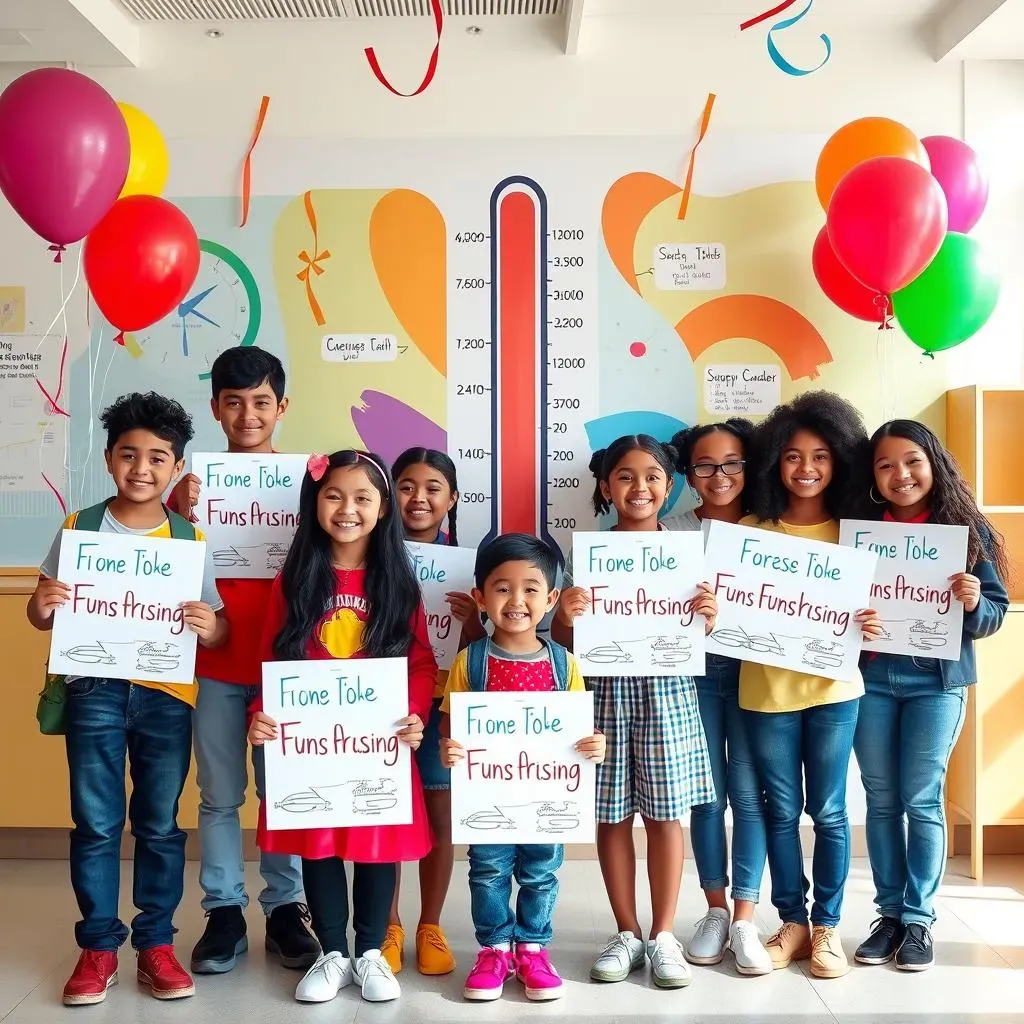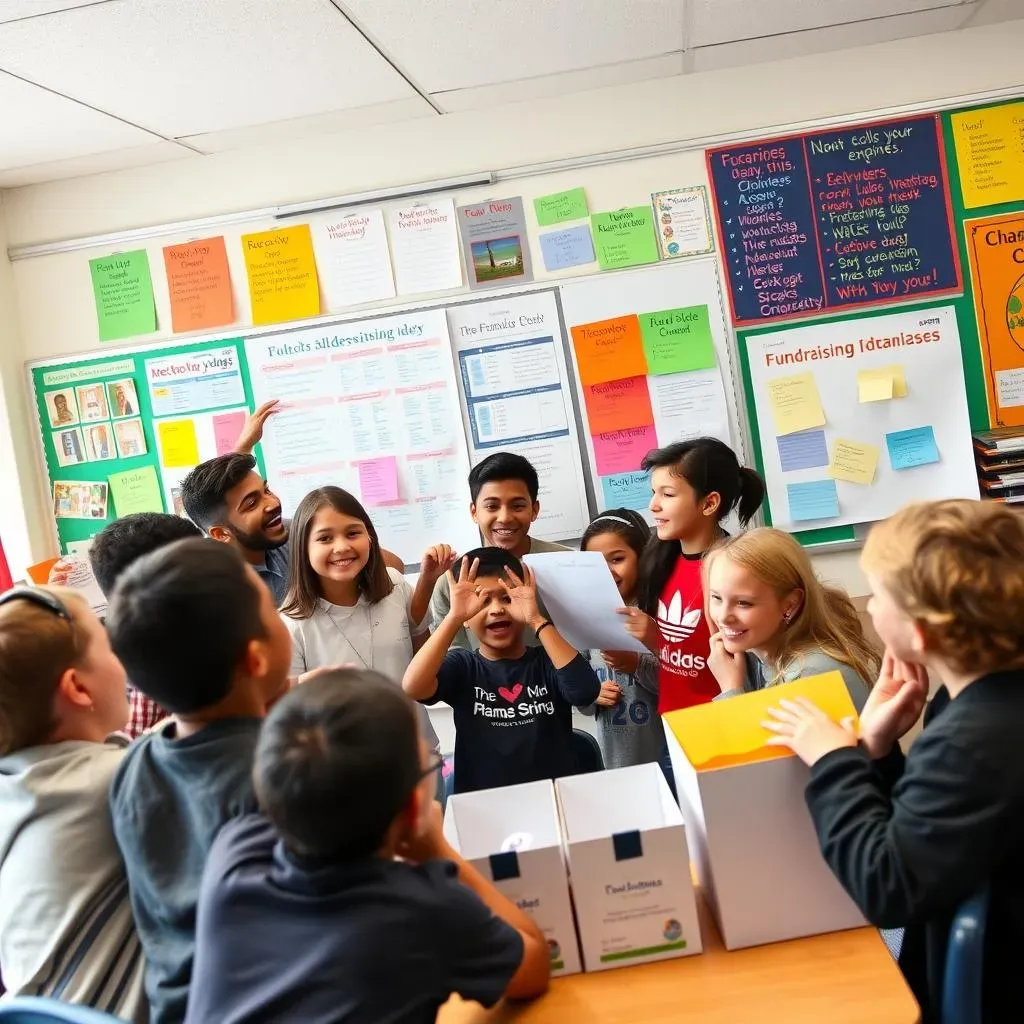Table of Contents
School fundraisers are crucial for enriching school experiences, but getting students genuinely excited to participate can be a challenge. This article tackles the question: "How to motivate students for fundraising," offering a practical, step-by-step approach to boost participation and achieve fundraising goals. We'll explore the psychology behind student motivation, examining what truly drives students to contribute their time and effort. Then, we'll dive into creative and effective strategies, from designing engaging events to offering appealing incentives. We'll also discuss the importance of clear communication and fostering a sense of ownership among students. Finally, we'll explore ways to measure the success of your fundraising efforts and maintain student engagement over time. Whether you're a teacher, parent, or school administrator, this guide provides actionable insights to transform your next fundraiser into a resounding success, fostering both school spirit and community involvement.
Understanding Student Motivation in Fundraising

Understanding Student Motivation in Fundraising
Intrinsic vs. Extrinsic Motivation
Understanding student motivation is key to successful fundraising. Kids aren't driven solely by rewards (like pizza parties!). Intrinsic motivation—the desire to do something for its own sake—plays a huge role. Think about it: a student who genuinely cares about their school's new library will be more likely to help raise funds than one who only sees a reward. We need to tap into that inner drive. One way is by clearly explaining how the fundraising efforts directly impact them and their school community. For example, show them how the money raised will directly benefit their classrooms or school trips. Make the connection clear and personal.
Extrinsic motivation—rewards and incentives—is also important, but it shouldn't be the *only* motivator. Think of it as a boost, not the engine. A well-designed reward system can certainly encourage participation, but it's less effective if students aren't already somewhat invested in the cause. If you're struggling to find the right balance, check out our guide on how to motivate students for fundraising for more ideas.
The Role of Social Influence
Peer pressure, surprisingly, can be a positive force. Students are highly influenced by their friends and classmates. If popular kids are involved in a fundraiser, others are more likely to join in. This is where a strong peer-to-peer fundraising strategy can make a difference. Encourage students to work together in teams, creating a sense of camaraderie and shared responsibility. This not only boosts participation but also teaches valuable teamwork skills. A little friendly competition between classes or teams can also add to the fun and increase the overall fundraising amount. Remember to celebrate team successes and individual contributions to encourage further participation.
- Highlight successful teams and their contributions.
- Organize team-building activities related to the fundraiser.
- Create a leaderboard to track progress and foster healthy competition.
Age and Developmental Stage
What motivates a kindergartner differs greatly from what motivates a high school senior. Younger students might be more responsive to tangible rewards (stickers, small toys), while older students might be more interested in experiences (extracurricular activities, field trips), or even contributing to a cause they believe in. Tailoring your approach to each age group is crucial. You can also incorporate different fundraising methods based on their age groups and interests. For instance, elementary school students might enjoy a bake sale or car wash, while high schoolers might prefer organizing a talent show or a community event. For some great ideas on age-appropriate fundraising activities, check out our post on elementary school fundraising ideas.
Age Group | Motivational Strategies |
|---|---|
Elementary | Tangible rewards, class competitions, fun events |
Middle School | Experiences, social recognition, team challenges |
High School | Cause-related fundraising, leadership roles, community impact |
Creative Strategies to Motivate Students for Fundraising

Creative Strategies to Motivate Students for Fundraising
Gamification and Challenges
Let's face it, kids love games! Transforming your fundraising into a fun challenge can dramatically boost participation. Think "Penny Wars" between classes, where each class tries to collect the most pennies (or larger bills!). You could also introduce a points system, awarding points for various fundraising activities—selling items, getting donations, volunteering time. These points can then be redeemed for prizes, creating a sense of accomplishment and friendly competition. Make sure the challenges are age-appropriate and achievable to avoid discouragement. For example, you could create a theme for each week of the fundraising drive, such as "Superhero Week" or "Crazy Hair Day," and encourage students to dress up while raising money. For more inspiration on creative fundraising ideas, check out our guide on unique high school fundraising ideas.
Another fantastic way to gamify fundraising is by using technology. Many apps and websites offer interactive fundraising platforms with progress trackers, leaderboards, and virtual rewards. These tools can make the fundraising process more engaging and transparent for students, allowing them to see the impact of their efforts in real-time. This visual representation of their progress can be highly motivating. For instance, you could use a fundraising platform that displays a progress bar showing how close the school is to reaching its goal. This visual representation can be a powerful motivator, encouraging students to contribute more and reach the target faster. For more advice on leveraging technology for fundraising, look at our article on top online fundraising platforms.
- Create a class-based fundraising competition with a clear winner.
- Use a points system to reward various fundraising activities.
- Integrate technology to track progress and provide virtual rewards.
Themed Events and Creative Activities
Instead of a plain old bake sale, think "Decades Day" where students dress up in outfits from different eras while selling baked goods. Or how about a "Talent Show Extravaganza" where students showcase their skills while collecting donations? The key is to create memorable experiences that are both fun and fundraising-focused. Themed events can be incredibly effective in motivating students, as they offer a unique and engaging way to participate. Themed events can increase participation by tapping into students' interests and providing a fun and engaging experience. For instance, a "Hollywood Night" fundraiser could involve students dressing up as their favorite movie characters and selling tickets to an event with performances, games, and food. For more ideas on themed events, check out our blog post on seasonal fundraising ideas.
Don't underestimate the power of creativity! Involve students in designing posters, creating promotional videos, or even composing catchy fundraising jingles. Giving them a creative outlet can increase their investment in the fundraising process. For example, you could hold a school-wide contest to design the best fundraising poster. The winning design could be used for all promotional materials, giving the winning student(s) a sense of accomplishment and ownership over the fundraiser. To learn more about effective fundraising campaigns, we recommend checking out our guide on tips for successful fundraising campaigns.
Theme | Activities |
|---|---|
Superhero Day | Costume contest, themed bake sale, donation drive |
Hollywood Night | Talent show, movie marathon, raffle |
Decades Day | Dress-up contest, themed food and activities, music |
Measuring Success and Maintaining Student Engagement in Fundraising

Measuring Success and Maintaining Student Engagement in Fundraising
Tracking Progress and Celebrating Achievements
Don't just focus on the final fundraising total. Regularly track progress and celebrate milestones along the way. This keeps students motivated and engaged throughout the entire process. Use visual aids like charts, graphs, or even a giant thermometer to show how close you are to reaching your goal. Publicly acknowledge and reward individual and team accomplishments. A simple shout-out during a school assembly or a celebratory pizza party can go a long way.
Transparency is key! Keep students informed about how the money raised is being used. Share updates regularly, perhaps with photos or videos showcasing the impact of their efforts. This helps them see the direct connection between their hard work and the positive changes happening in their school. For additional tips on promoting your fundraiser, check out our guide on social media promotion.
- Use visual aids to track progress.
- Publicly acknowledge and reward accomplishments.
- Share regular updates on how the money is being used.
Gathering Feedback and Making Improvements
After each fundraising event, gather feedback from students, teachers, and parents. What worked well? What could be improved? This information is invaluable for planning future fundraisers. Students' suggestions can be especially insightful, as they offer a fresh perspective on what motivates them and their peers. Consider creating a short survey or holding a brief meeting to collect feedback. Don't be afraid to experiment with different approaches and adapt your strategies based on what resonates best with your student body. For more insights on successful fundraising, consult our article on school fundraising success stories.
Remember, maintaining student engagement is an ongoing process, not a one-time event. Continuously look for ways to make fundraising fun, rewarding, and meaningful for your students. Involve them in the planning process, give them leadership opportunities, and empower them to make a real difference. For some practical tips on organizing successful fundraisers, you might find our guide on organizing a school fundraiser helpful.
Area | Questions to Ask |
|---|---|
Event Planning | What did you enjoy most/least? What would you change? |
Incentives | Were the rewards motivating? What other rewards would you suggest? |
Communication | Did you feel informed about the fundraiser's progress? |
Long-Term Engagement Strategies
Don't let the fundraising momentum fade after one event. Establish a system for ongoing engagement. This could involve creating a student fundraising committee that helps plan future events, establishing a school-wide philanthropy club, or incorporating fundraising activities into the school's curriculum. Regularly highlight the impact of past fundraising efforts, showcasing how student contributions have made a tangible difference in the school community. This fosters a sense of pride and ownership, motivating students to continue participating in future initiatives. For example, you could create a display in the school showcasing photos and stories of how previous fundraising efforts have benefited the school.
Consider partnering with local businesses or organizations to create unique fundraising opportunities. This can broaden the reach of your fundraising efforts and provide students with valuable real-world experience. For instance, you could partner with a local bakery to sell baked goods during a school event, or collaborate with a community organization to organize a volunteer event. Remember, consistent engagement is key to sustaining student interest and ensuring the long-term success of your fundraising efforts. Check out our FAQ section for more information: School Fundraising FAQs.
